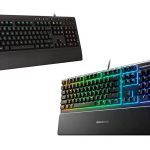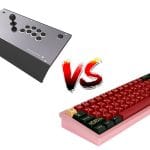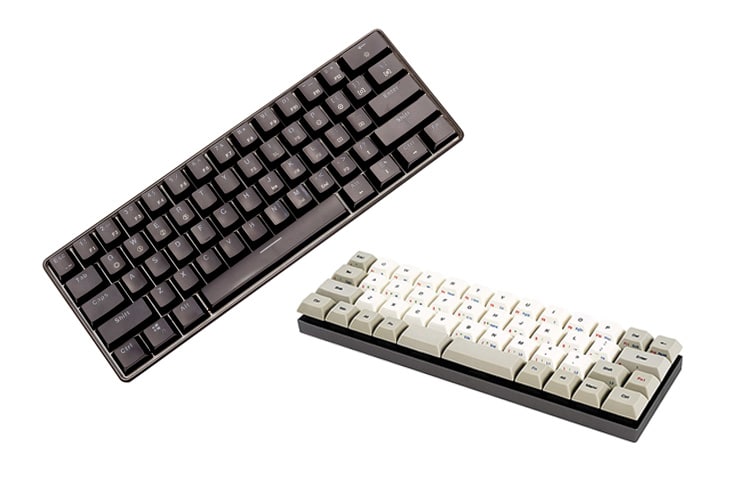
Mechanical keyboards have been getting smaller over the past few years. However, these small form factor keyboards beg the question, how small is too small? And how practical are these smaller keyboards?
60% keyboards are objectively better than 40% mechanical keyboards since they do not sacrifice as many keys as 40% keyboards. However, 40% can still work as an extra keyboard or as a travel keyboard for lightweight tasks due to their extremely small size.
In this article, we will be taking a deep dive into the two smallest keyboards in the market: 40% keyboards and 60% keyboards. We will be taking a looking at the strong points of these keyboards as well as the things that you consumers should consider before buying them. And by the end of this article, regular consumers and keyboards enthusiasts should clearly know which of these keyboards best fit them.
Why Are Keyboards Getting Smaller?

104 keyboards used to be the flagship offerings from all the big players in the PC peripheral market. However, since the rise of custom keyboards, things have rapidly changed. Consumers are suddenly preferring smaller boards such as 60% keyboards, 65% keyboards, 75% keyboards, and TKLs.
There can be many reasons to explain why this is happening. However, the most common reason is that consumers have realized that 104 keyboards waste a ton of space with extra keys that are rarely used. The Numpad, for example, is pretty much useless to the target audience of gaming keyboard brands.
Also, with the rise of esports and PC gaming in general, consumers have gravitated towards more compact keyboards that deliver just the right number of features for their intended use case. Today, 104 keyboards are no longer popular and have almost been fully replaced by TKL, 65%, and 60% keyboards.
Of course, things can suddenly change, and we might see a resurgence of full-sized keyboards. But for now, small keyboards are the top dogs of the market.
Summary of 60% Keyboards

Let us kick things off by talking about 60% keyboards. These keyboards are the most common small form factor keyboards in the market. They were the first to arrive and are directly responsible for spawning 65%, 75%, and other small form factor keyboards.
The main appeal with 60% keyboards is that they significantly downside the traditional keyboard design. They shave off all unnecessary parts of the keyboard, including the home row, F-keys, and Numpad. This makes them incredibly light and portable, making them great choices for your workplace or in competitive LAN events.
In addition, they are great companions for users with small desks or students living in dorms. They do not take up a lot of space and can easily be removed from your desk when not in use.
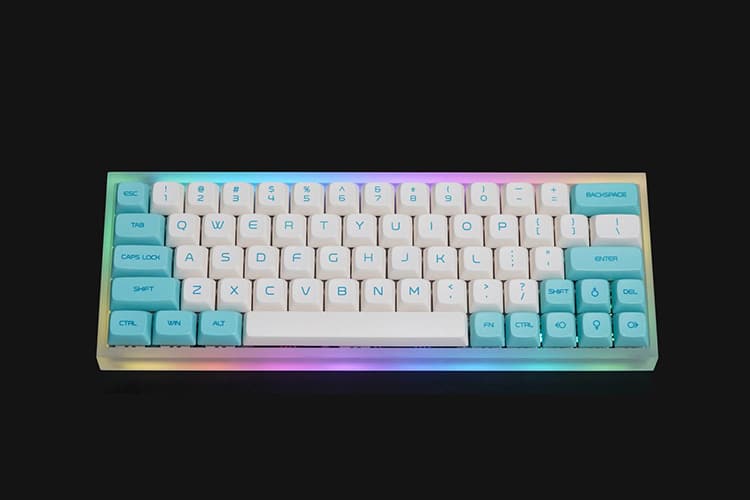
And despite physically losing a number of keys, they still maintain the full functionality of your keyboard. This is because all missing keys can be accessed through layers. For those who aren’t familiar with layers, this basically allows you to map more than one function in a single key.
The backspace key, for instance, can have a secondary or tertiary function. It can hold other key functions such as delete, screenshot, or any of your media keys. Of course, it will take some time to get used to this odd layout. However, this can potentially make your workflow more efficient in the long run.
Of course, 60% keyboards are not for everyone. This is why other deviations of this layout exist. However, for those who are looking for a compact keyboard that does not affect usability, 60% keyboards are hard to beat.
Pros of 60% Keyboards
- Small, Light, and Portable
- Flexible in terms of layout
- Good Variety
- Great for Gaming (Especially for FPS titles)
Cons of 60% Keyboards
- Missing Essential Physical Keys
- Requires an Adjustment Period
Popular 60% Custom and Prebuilt Keyboards
- KBDFans Tofu60
- Ducky One 2 Mini
- Epomaker GK61X/Skyloong GK61 (All GK61 variants)
- Cannonkeys Brutal 60
- Cannonkeys Bakeneko
- Royal Kludge RK61
Summary of 40% Keyboards
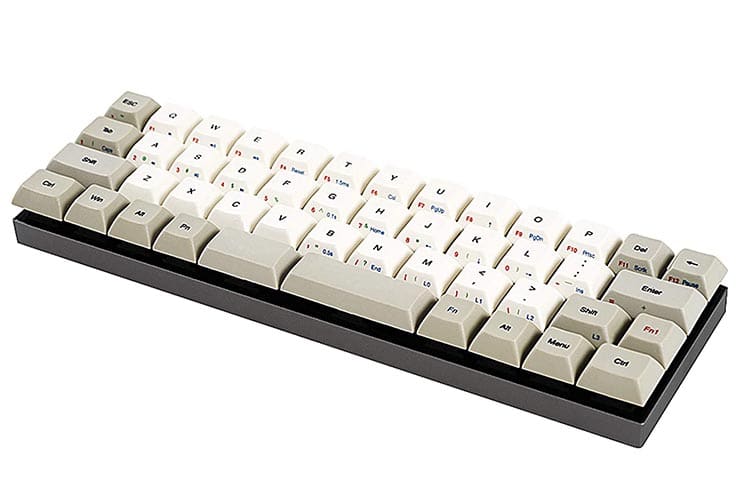
One of the most unorthodox entries in the mechanical keyboard market is 40% keyboards. These keyboards are surprisingly even smaller than 60% keyboards, meaning they are further sacrificing more keys. While this may look like a bad thing, there are actually a number of perks that you get with a keyboard this small.
The first major perk of 40% keyboards is their size. Considering how small they are, they are relatively easy to carry around. Even 40% keyboards that are utilizing cases made of aluminum will still be lighter than 60% or 65% keyboards.
Also, for those who need a keyboard for traveling, 40% keyboards are a great fit. They can do several lightweight tasks such as browsing the internet, chatting with friends, answering emails, and typing documents.
40% keyboards are also potentially good for gaming. Unlike with productivity tasks, gaming only requires a handful of buttons. So, in theory, you can customize a 40% keyboard to be as efficient as possible for gaming. And, of course, you will get tons of mouse area for FPS titles.
Another perk of 40% keyboards is that they do not require tons of switches. This means less soldering for soldered builds and spending less on key switches for hot-swap boards. Having fewer keys required also makes 40% keyboards great as a testing platform for new switches or experimental switches.
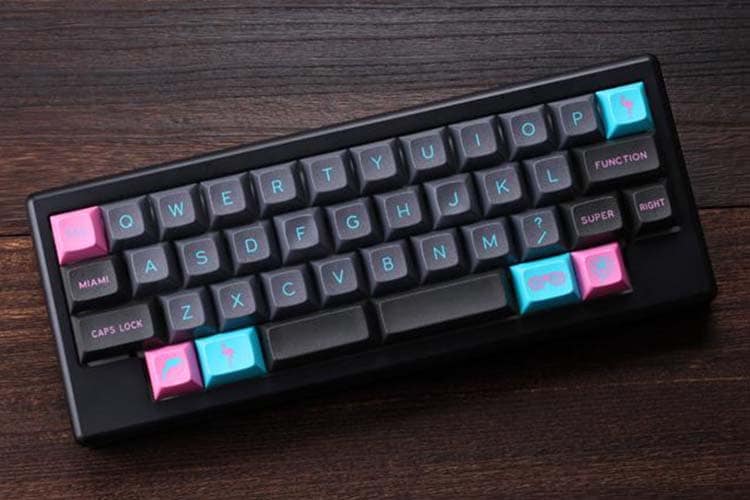
Lastly, 40% keyboards have a unique design. There’s just something about it that looks visually more striking than larger keyboards. This is especially true for unique layouts such as 40% Arisu keyboards.
With that said, 40% keyboards may not be the most practical, especially if you are planning on using them as your daily driver. They are missing way too many keys, which can be very important in professional tasks such as video editing and programming.
They may also need tons of modification and custom layer mappings in order to be used with regular tasks such as web browsing. And for some people who aren’t too deep into the hobby, it’s just not worth it.
In addition, 40% keyboards have less variety compared to 60% keyboards. There are almost no prebuilt options. 40% custom kits are also quite limited and can only be found on vendors such as KPRepublic. Overall, 40% keyboards are more of a novelty item and are not recommended to those building their first mechanical keyboard or for those looking to for a new daily driver.
Pros of 40% Keyboards
- Extremely Small
- Unique Design
- Requires less Key Switches
- Potentially Great for Gaming
Cons of 40% Keyboards
- May be impractical due to the number of missing keys
- Not a lot of options in terms of case and plate material
- Not as widely available as 60% keyboards
- More of a novelty item
Popular 40% Custom and Prebuilt Keyboards
- KPRepublic Daisy 40
- BM43
60% and 40% Keycap Compatibility
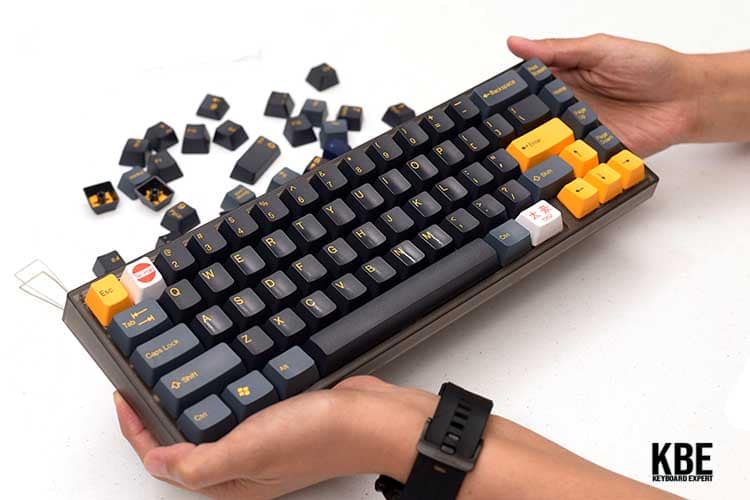
When purchasing custom keycap sets for these keyboards, you will have to note a few things. For standard layout 60% keyboards, all keycap sets should be compatible with it. However, when using alternate 60% layouts, other keys might be needed, such as 1U modifiers and a 1.75U right shift key.
As for 40% keyboards, things are a bit more challenging. There is technically no standard when it comes to these keyboards. This means that the special keys required will highly depend on the model of the 40% keyboard.
When dealing with these kinds of keyboards, we highly recommend purchasing sets from GMK, ePBT, Geekark, or any other vendor that sells keycaps with high compatibility with different layouts.
Which is the Better Keyboard?
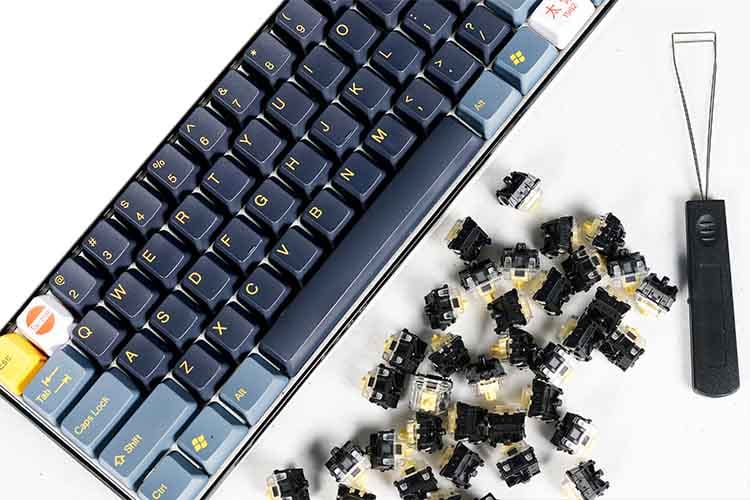
Unlike other keyboard form factor comparisons, there is a clear winner here. Due to how many features 40% keyboards sacrifice, 60% keyboards are objectively the better choice. In fact, most enthusiasts would argue that most keyboards that are smaller than 60% keyboards are not viable for daily use.
Don’t get us wrong. We are not saying that 60% keyboards are bad keyboards. We have already stated that they have tons of uses and are great additions to anyone’s collection.
However, when objectively comparing their use case and practicality as a daily driver, 40% keyboards just do not cut it. If you plan on going with a small form factor keyboard, 60% and 65% keyboard should be the way to go.

The KBE team is dedicated to sharing our knowledge and creating useful resources about computer keyboards. This article was written as a team collaboration, combining our knowledge and years of experience using, building and modding keyboards. Meet the team here.

